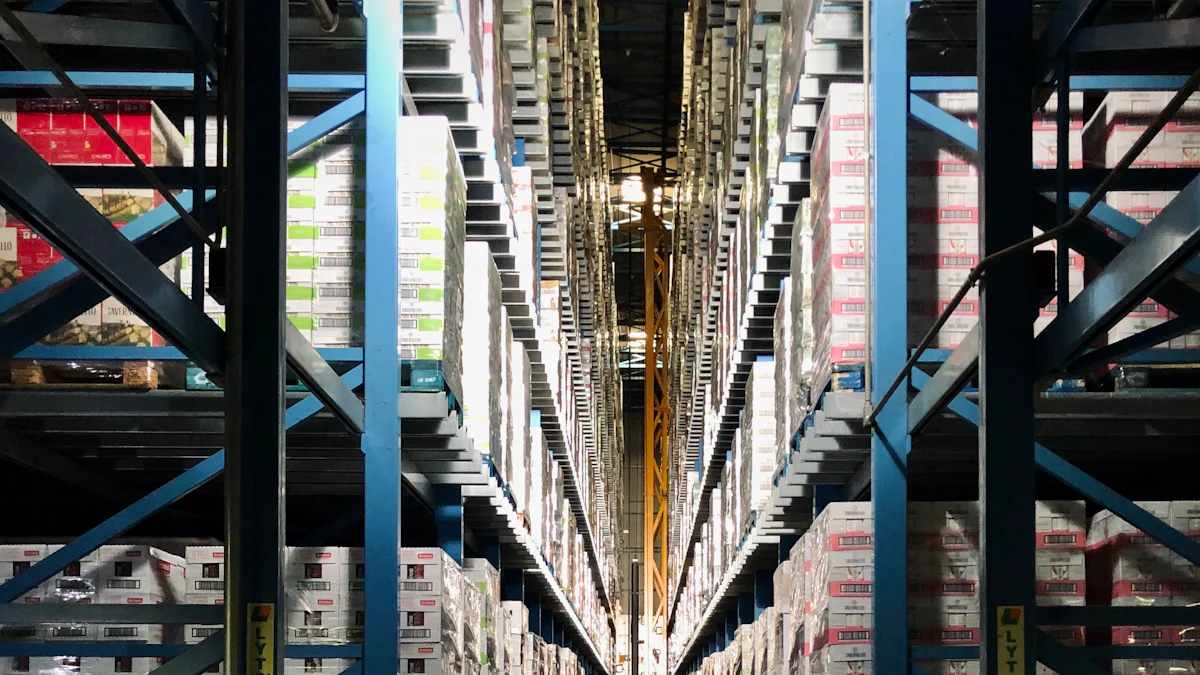The IoT Supply Chain Evolution: A Paradigm Shift

IoT supply chain revolutionizes the traditional methods of managing and tracking goods. Its integration has become essential in modern supply chains, offering unparalleled benefits. This introduction sets the stage for exploring the impact of IoT technology on supply chain management, highlighting key advantages and real-world applications.
The Rise of IoT in Supply Chains

The historical context of the rise of IoT supply chain unveils a significant shift in how goods are managed and tracked. Early adoption of technologies like Radio Frequency Identification (RFID) in the early 2000s marked a pivotal moment. This technology was popularized and heavily relied on to track products, aiming to reduce inventory levels and enhance supply chain visibility.
The extensive use of robots and IoT devices within warehouses brought about a new era of automation. Tasks such as stocking, packaging, real-time inventory tracking, and predictive analytics were revolutionized. Companies like Walmart leveraged Radio Frequency Identification (RFID) technology to improve inventory accuracy drastically. This move not only reduced out-of-stock instances but also streamlined replenishment processes effectively.
Moreover, giants like Alibaba embraced IoT-enabled smart warehouses to automate critical processes such as inventory management, order fulfillment, and quality control. On a similar note, Amazon's investment of $1 billion in warehouse robotics showcased a commitment to leveraging technology for reducing manual labor and offering faster delivery times.
The impact of IoT in supply chain management cannot be overstated. It has played a crucial role in helping businesses serve customers better, reduce operational costs, and enhance overall efficiency. The potential of IoT to transform supply chain management lies in its ability to offer real-time data insights that boost productivity, accuracy, and visibility significantly.
Key Benefits of IoT in Supply Chain Management
Enhanced Visibility
In the realm of supply chain management, IoT technology offers a transformative approach to enhancing visibility. Through real-time monitoring, businesses can now track their goods and assets with unprecedented accuracy and efficiency. This level of monitoring enables companies to optimize their operations, reduce delays, and respond promptly to any disruptions that may arise.
Implementing IoT solutions for inventory management brings about a paradigm shift in how businesses handle their stock levels. By leveraging IoT devices, organizations can automate inventory tracking processes, ensuring that stock levels are constantly monitored and replenished as needed. This automation not only reduces manual errors but also streamlines the entire inventory management process, leading to improved operational efficiency.
Improved Efficiency
The integration of IoT technologies in supply chain management paves the way for enhanced efficiency across various operational aspects. Through automation, repetitive tasks that were once labor-intensive are now seamlessly executed by smart devices and sensors. This automation not only accelerates processes but also minimizes human error, resulting in smoother operations and cost savings.
One of the key advantages of IoT in supply chain management is its ability to enable predictive maintenance strategies. By analyzing real-time data collected from IoT devices embedded within machinery and equipment, businesses can predict potential failures before they occur. This proactive approach not only reduces downtime but also extends the lifespan of critical assets, ultimately optimizing operational efficiency.
Real-World Applications and Future Trends

Case Studies
Tesla's Networked Shanghai Factory IoT Implementation
Subject: Automotive production quality control and scheduling flexibility
Outcome: Bolstered quality control and scheduling flexibility
Relevance: Demonstrates IoT's potential impacts in automotive production
In Tesla's case, the implementation of IoT technology at their Shanghai factory has significantly enhanced their production processes. By utilizing IoT devices for quality control and scheduling, Tesla has achieved remarkable improvements in both areas. The real-time data provided by these devices has allowed for immediate adjustments, ensuring that production runs smoothly and efficiently.
Uniqlo's RFID-enabled Distribution Visibility
Subject: Merchandise flows transformation
Outcome: Transformed merchandise flows through RFID-enabled distribution visibility
Relevance: Highlights the transformative impact of IoT on supply chain operations
Uniqlo's adoption of RFID technology for distribution visibility has revolutionized how merchandise flows within their supply chain. The ability to track products in real-time has streamlined their operations, leading to more efficient inventory management and faster order fulfillment. This showcases how IoT can bring about tangible benefits in enhancing supply chain visibility.
Lessons Learned
When examining these case studies, several key lessons emerge regarding the successful implementation of IoT in supply chains:
Integration is Key: Seamless integration of IoT devices into existing systems is crucial for maximizing their benefits.
Real-Time Data is Power: The availability of real-time data enables quick decision-making and proactive responses to disruptions.
Continuous Improvement: Regularly analyzing IoT data allows for continuous improvement in operational processes.
Employee Training: Proper training for employees on using IoT devices ensures optimal utilization and efficiency gains.
Future Trends
Emerging Technologies
The future of IoT in supply chains holds exciting prospects with the emergence of cutting-edge technologies:
Blockchain Integration: Incorporating blockchain technology with IoT can enhance security and transparency throughout the supply chain.
AI-driven Analytics: Utilizing artificial intelligence for analyzing vast amounts of IoT data can lead to more accurate predictions and optimized decision-making.
Potential Developments
Looking ahead, potential developments in the realm of IoT supply chains include:
Autonomous Vehicles: The integration of autonomous vehicles powered by IoT technology could revolutionize transportation logistics.
Smart Packaging: Innovations in smart packaging solutions equipped with IoT sensors can provide real-time insights into product conditions during transit.
The evolution of these technologies will undoubtedly shape the future landscape of supply chain management, offering unprecedented levels of efficiency, visibility, and optimization.
IoT's transformative power lies in its ability to optimize supply chain operations, enhance quality control, and ensure compliance.
Businesses can streamline operations, enhance collaboration with partners, reduce waste, and make informed decisions driven by real-time data.
Combining AI and machine learning algorithms with IoT data unlocks advanced predictive analytics, demand forecasting, and proactive decision-making skills.
IoT technology has revolutionized the supply chain industry since its conception.
IoT devices can monitor and optimize energy usage and wastage in the supply chain, leading to more sustainable operations and reducing carbon footprints.
See Also
Transforming Supply Chain: Innovations Reshaping Logistics
Revealing Tomorrow's Supply Chain: AI Integration Perspectives
Advancements in Logistics Technology: Exploring Future Paths
Seamless Success: Ensuring Supply Chain Consistency
Understanding Price Trends: Managing Supply Chain Challenges
